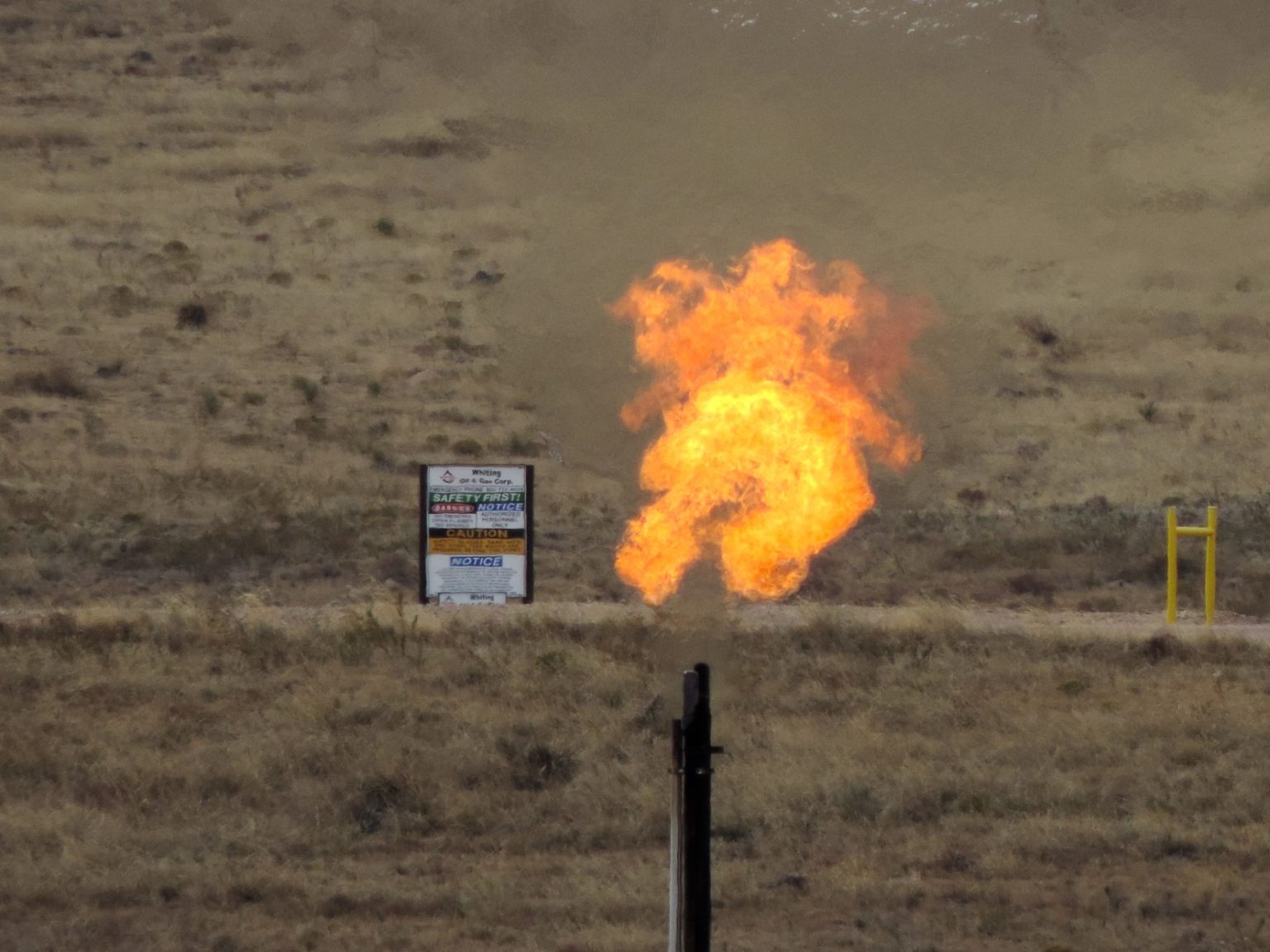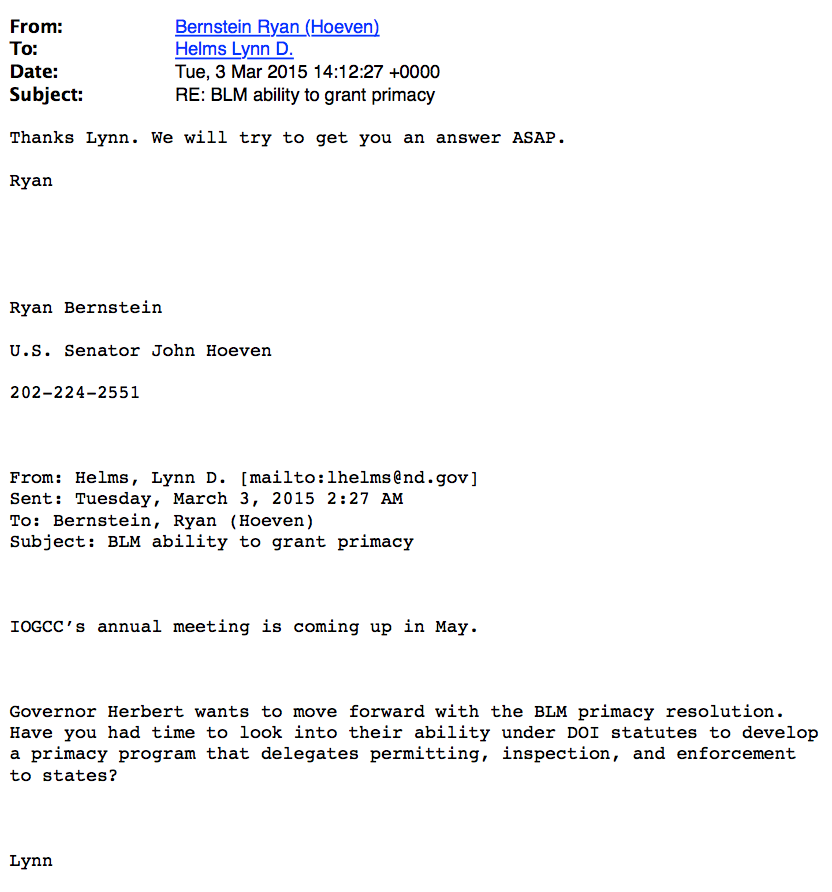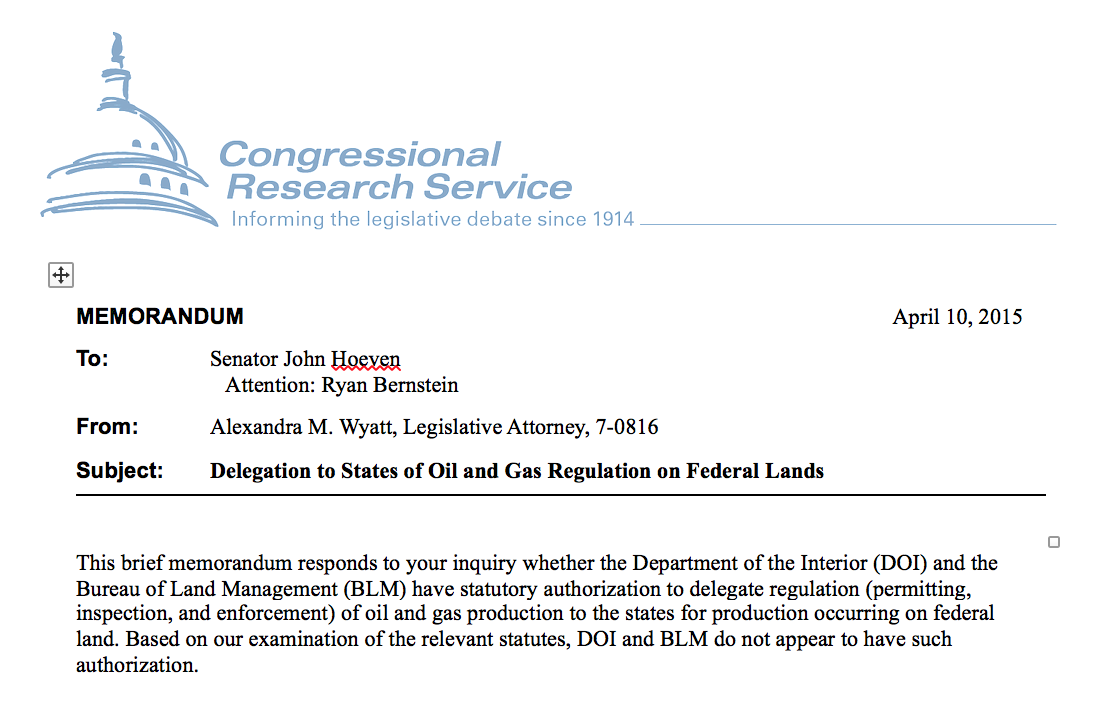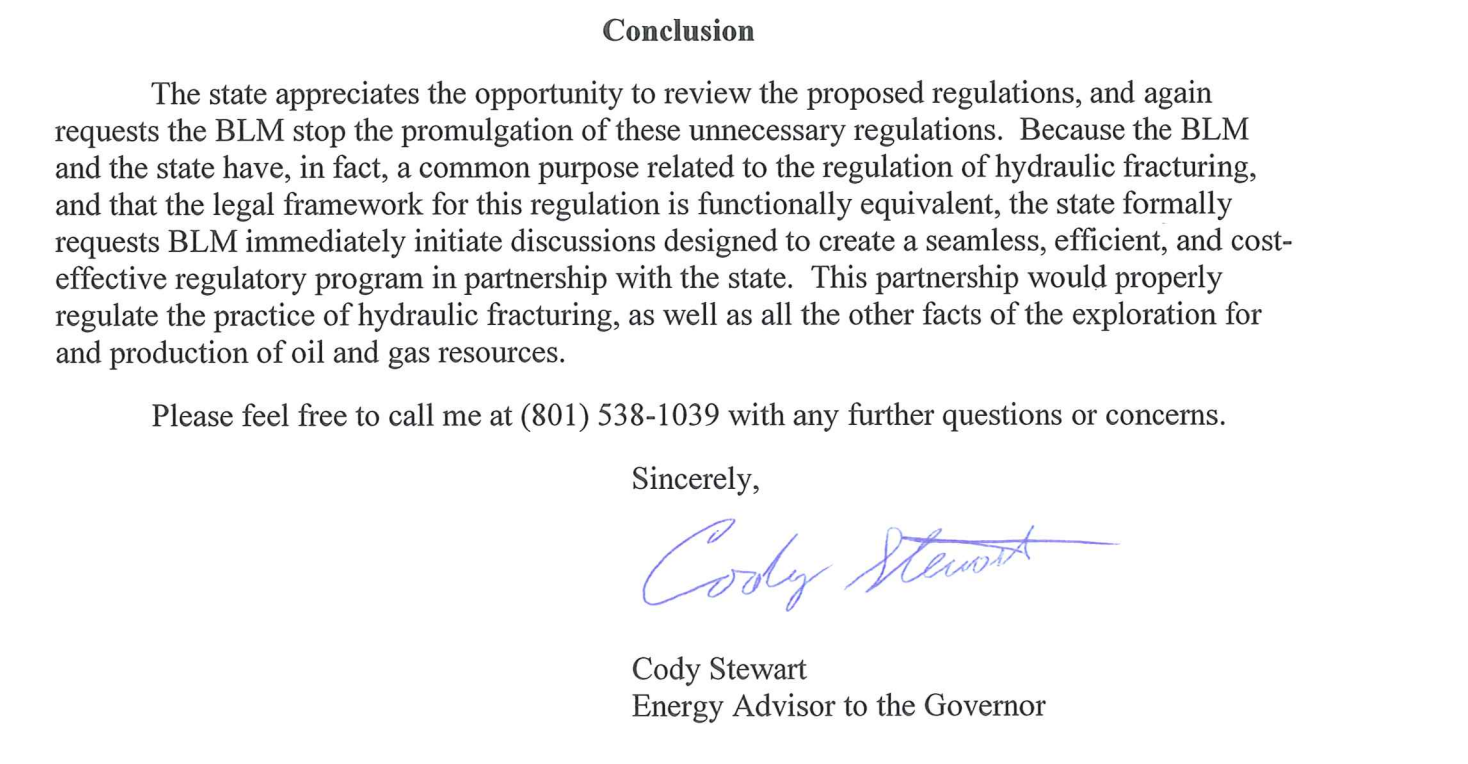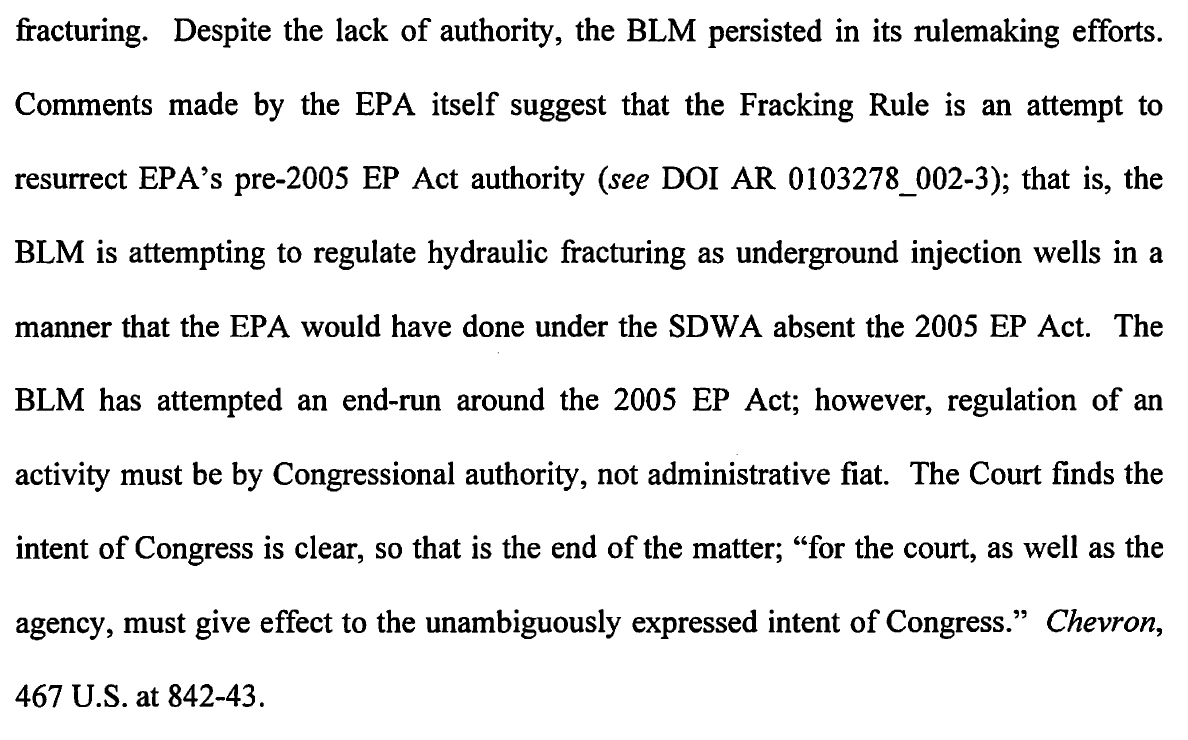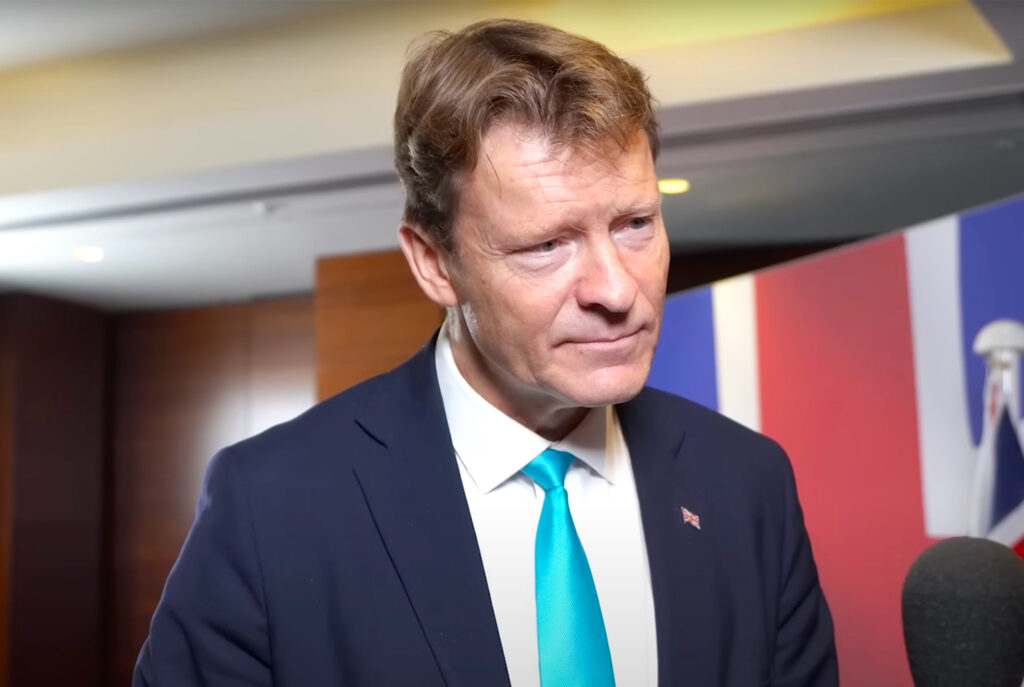In a ruling on the Obama Administration’s proposed regulations of hydraulic fracturing (“fracking”) on U.S. public lands, U.S. District Court for the District of Wyoming Judge Scott Skavdahl — a President Obama appointee — struck down the rules as an illegal violation of the Energy Policy Act of 2005.
Filed in March 2015 by first the Independent Petroleum Association of America (IPAA) and Western Energy Alliance and then the State of Wyoming (soon joined by North Dakota, Utah and Colorado), the industry and state lawsuits would soon thereafter merge into a single lawsuit. The merger symbolizes the origins of the lawsuit — the 2014 Interstate Oil and Gas Compact Commission (IOGCC) annual meeting in Columbus, Ohio.
IOGCC, a collective of state-level oil and gas industry regulators or other official state representatives appointed by governors (sometimes lobbyists or industry executives), merges together industry interests and regulators by bringing them to the table at biannual meetings and providing a network through which to maintain year-round communications and coordination.
The majority of IOGCC‘s at-large members work for the oil and gas industry as lobbyists and executives. And like the American Legislative Exchange Council (ALEC), IOGCC members propose and pass model resolutions.
At the 2014 Columbus meeting attended by DeSmog, IOGCC‘s resolutions committee convened to discuss what to do about the then-proposed U.S. Department of Interior regulation of fracking on public lands. Although a resolution did not pass out of the committee — one was deliberated upon but ultimately tabled until the May 2015 IOGCC business meeting held in Salt Lake City, Utah — an action plan did arise.
That plan called for resolutions committee member Lynn Helms, North Dakota’s official state representative to IOGCC and the head of its Industrial Commission (and former long-time employee of Hess Corporation), to contact U.S. Sen. John Hoeven’s (R-ND) legal counsel and chief-of-staff — Ryan Bernstein — and formulate a plan to stall or block the proposed rules. Emails obtained under North Dakota’s Open Records Statute show that indeed, Helms contacted Bernstein to get the ball rolling to do just that.
Image Credit: North Dakota Industrial Commission
Months later, IOGCC‘s deputy director Gerry Baker emailed public lands committee members on March 24, 2015 to check in on the status of congressional activity on the proposed resolutions. Helms responded to the email, saying he had emailed Bernstein on March 3 and that he is “trying to get an answer to me by end of the month.”
On the same day IPAA filed its lawsuit on March 20, 2015, Hoeven’s office issued a press release denouncing the BLM‘s final rule.
“We have long supported a states-first approach to hydraulic fracturing, recognizing that states have a successful record of effectively regulating hydraulic fracturing with good environmental stewardship. Now, however, the Interior Department is imposing a federal regulation that duplicates what the states have been doing successfully for decades,” stated Hoeven. “We encourage the BLM to work with states and defer to the regulatory programs they have put in place with a long and successful track record.”
Bernstein did get an answer on April 10, 2015 in the form of a memorandum addressed to Hoeven (formerly chairman for IOGCC when he served as North Dakota Governor) and Bernstein from the Congressional Research Service (CRS) obtained under Utah’s Government Records Access and Management Act. That memo concluded that states, according to the research conducted by CRS legislative attorney Alexandra Wyatt, do not possess legal authority to have regulatory duties transferred to them as it pertains to fracking on U.S. public lands.
Image Credit: Congressional Research Service
IOGCC Tells DeSmog “We Will Write the Bill”
A month later, Utah Governor Gary Herbert — then IOGCC‘s chairman — announced at the IOGCC‘s business meeting in Salt Lake City on May 18, 2015 that his state would enter as an intervenor in the lawsuit against the Interior Department alongside Wyoming, North Dakota and Colorado. The states’ lawsuit was consolidated with the WEA and IPAA lawsuit into a single case just two weeks later on June 4.
In an interview with IOGCC communications director Carol Booth on the sidelines of the Columbus meeting, Booth told DeSmog that passed or proposed resolutions often result in things like this happening.
“Those usually start as the process for somewhere else we need to go,” explained Booth. “Lynn Helms is taking that resolution to Senator Hoeven and Senator Hoeven will look at it and it’s kind of us urging Congress [to do something] and we will write the bill or work with his staff to write a bill to introduce.”
In this case, with the idea of state primacy legislation struck down by CRS, IOGCC and its industry backers got their back-up plan: a victory in federal court upholding the legal status quo.
IOGCC Organizes BLM Rule Comments
IOGCC‘s push back against the BLM fracking rules, as it would happen, actually began the day after the initial rules were rolled out in March 2013. Baker wrote an email on March 17, 2013 to IOGCC‘s state representatives, saying he “would appreciate comments from anyone” on the then-proposed rules.
Utah and North Dakota, presumably on behalf of IOGCC, did proceed to write letters to BLM on the proposed rules.
The Utah letter was written by former industry lobbyist and Utah Republican Governor Gary Herbert’s energy adviser Cody Stewart. It concluded that the federal government should not encroach upon state regulatory authority as it pertains to fracking on public lands.
Stewart formerly worked as a lobbyist for the Independent Petroleum Association of the Mountains States (IPAMS), now known as WEA, the co-plaintiff in the successful lawsuit.
Image Credit: Regulations.gov
North Dakota’s letter, signed by Governor Jack Dalrymple and Attorney General Wayne Stenehjem as representatives of the Industrial Commission, came to a similar conclusion to the Utah commenters.
“The NDIC believes the proposed rule is unnecessary in North Dakota since the NDIC has already promulgated effective regulations requiring chemical disclosure and environmental protection,” they wrote.
“The BLM‘s analysis of costs and benefits does not take into consideration that many states, like North Dakota, already have similar requirements in their current rules that make the proposed revised rule duplicative and unnecessary. Since each sedimentary basin has unique deposits and geologic features which result in unique local environmental and geologic conditions regulating oil and gas development is a role best left to state regulation.”
Bernstein’s Mineral Holdings
It turns out that Bernstein, an IOGCC legal and regulatory affairs committee member according to its 2015 Directory, has a personal financial stake in oil and gas industry development. So too does his boss John Hoeven.
Financial disclosure forms reveal that Bernstein owns between $100,000-$1 million worth of oil and gas mineral rights through a company he incorporated in North Dakota called Hills and Prairie Properties LLC, according to his 2014 financial disclosure form. That grew from $10,000-$100,000 worth of stock, as listed in Bernstein’s 2013 financial disclosure form.
Hoeven also owns hundreds of thousands of dollars worth of oil and gas industry-related stock in companies such as Energy Transfer Partners, Linn Energy, Kinder Morgan and Honeywell International, plus hundreds of thousands more in oil-by-rail carriers CSX Corporation and Union Pacific.
In reaction to the BLM federal court ruling, Hoeven’s office issued a statement lauding the decision and mentioned royalties, though not his top aide’s royalties investments.
“States have been managing hydraulic fracturing with good environmental stewardship for decades,” Hoeven said. “This regulation would have duplicated these local efforts, adding layers of bureaucracy and threatening to increase costs for producers and consumers without added benefits. Further, by restricting and delaying development on public lands, this rule would have severely reduced royalties to federal and state government.”
IOGCC‘s Halliburton Loophole Cited
Both IPAA and its front group Energy In Depth weighed in on the court ruling, as did WEA.
“We’re overjoyed with the ruling. The judge determined that the federal government lacks the authority to regulate fracking, period. He decided exclusively on statutory authority, so there’s nothing to remand, no do over,” wrote WEA in its press release.
IPAA sang a similar tune in its press release.
“The Judge could not have been more clear when he ruled, ‘Congress has not directed the BLM to enact regulations governing hydraulic fracturing,” reads the IPAA press release. “Indeed, Congress has expressly removed federal agency authority to regulate the activity, making its intent clear.’”
The Energy Policy Act of 2005 “Halliburton Loophole,” cited by Judge Skavdahl, was also pushed to the forefront by IOGCC as revealed by an InsideClimate News investigation. That loophole exempts the oil and gas industry from federal regulations of fracking, which is what Skavdahl pointed to in his ruling.
Image Credit: U.S. District Court for the District of Wyoming
Food and Water Watch executive director Wenonah Hauter pointed to that bill in her statement denouncing the decision.
“We have Dick Cheney and the Energy Policy Act of 2005 to thank for this ruling that federal agencies cannot implement regulations to protect us from fracking,” stated Hauter. “This ruling indicates more starkly than ever the urgent need for Congress to undo the harmful policies enacted under that legislation and provide our agencies the power to what they were created to do—protect our resources, our lands, and our communities from harm.”
But not only do we have Cheney and the company for which he formerly served as CEO, Halliburton, to thank. We also have IOGCC, the most powerful Congress-authorized oil and gas industry lobbying organ few have ever heard of.
The Obama Administration has not indicated whether it intends to appeal the ruling.
Photo Credit: WildEarth Guardians | Flickr
Subscribe to our newsletter
Stay up to date with DeSmog news and alerts


